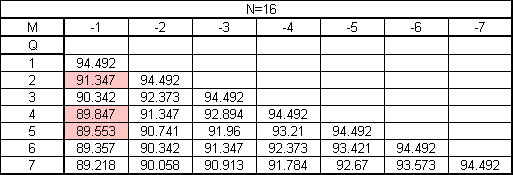
For example, the orbit of Salyut-3 at the time of Soyuz-14 and -15 launches to it was such that it repeated every 63 revolutions, i.e. almost every four days. The nodal period at such occasion was 89.85 minutes. The same was true for Soyuz-21 when it was launched towards Salyut-5. Soyuz-23 and -24 were launched when the period was nearer 89.55 minutes, which corresponds to a ground track that repeats every 79 revolutions.
A general theory can be developed to calculate such orbits. The repeating pattern is determined by four parameters:

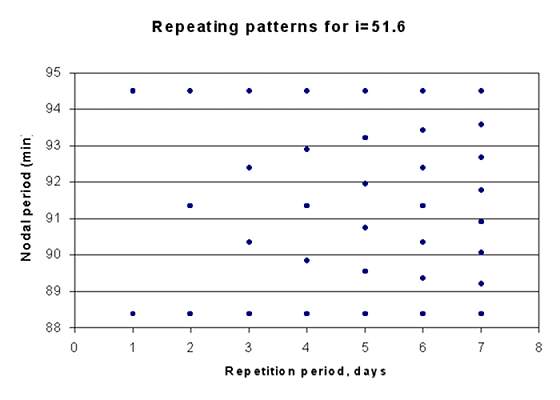
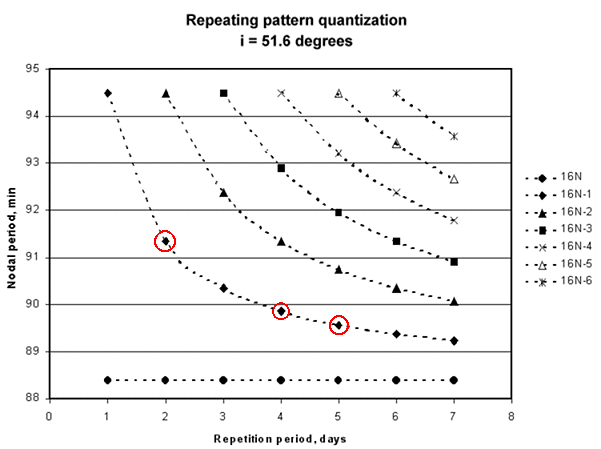
The figure below shows the
orbital period of Salyut-4 during 1975. The launches of Soyuz craft destined
for Salyut are marked, including the launch failure called the "April 5
anomaly". All Soyuz launches except the unmanned Soyuz-20 took place at
a period very close to 91.35 minutes.
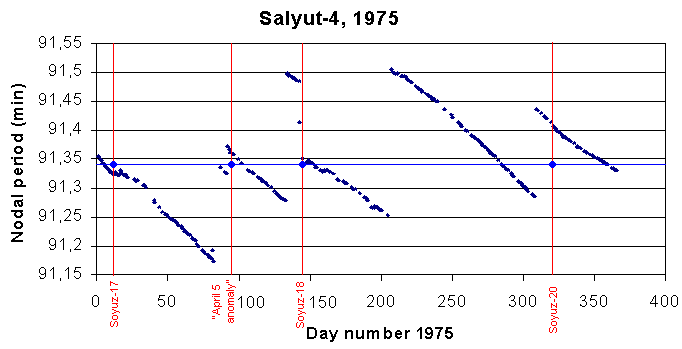
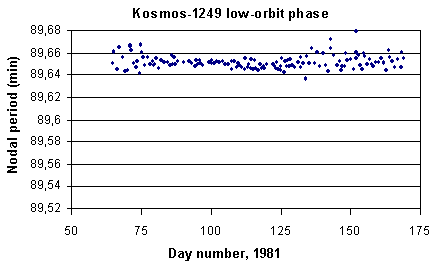 The
Soviet/russian satellite systems to monitor foreign fleet movements split
into two branches, the passive US-P program still in use and the radar
equipped satellites designated US-A that carried nuclear reactors. These
mission types both showed extensive maneuvering by the spacecraft to maintain
both stabilized ground tracks, and in the case of US-A, also to maintain
the inter-satellite distance between an active pair of satellites.
The
Soviet/russian satellite systems to monitor foreign fleet movements split
into two branches, the passive US-P program still in use and the radar
equipped satellites designated US-A that carried nuclear reactors. These
mission types both showed extensive maneuvering by the spacecraft to maintain
both stabilized ground tracks, and in the case of US-A, also to maintain
the inter-satellite distance between an active pair of satellites.
The US-A spacecraft maintained an orbit at i = 65o and a nodal period of 89.65 min, which corresponds to an average altitude of 255 km. This turns out to be an orbit with the parameters (N,M,Q)=(16, -1, 7) which corresponds to a ground track that repeats every 111 orbits, i.e. weekly. the graph below shows how Kosmos-1249, a US-A spacecraft. launched in March 1981, was maneuvered extensively to keep its nodal period extremely close to 89.65 minutes.
The US-P spacecraft are still in use and they have operated in pairs in widely separated orbital planes. However, they have always maintained orbits with a well defined repeating pattern. These spacecraft use an orbit at i = 65o and a nodal period of 93.30 min, which corresponds to an average altitude of 434 km. This turns out to be an orbit with the parameters (N,M,Q)=(15, 1, 4) which corresponds to a ground track that repeats every 61 orbits.
A simple Visual Basic program to design orbits with different repeating patterns can be found here.